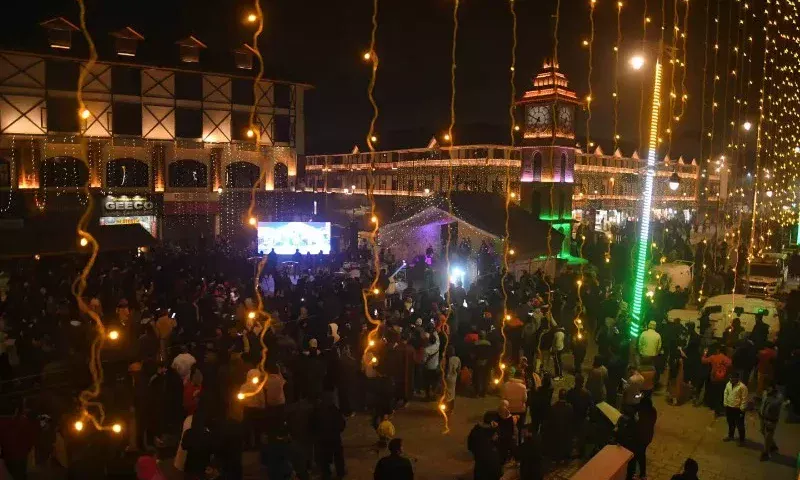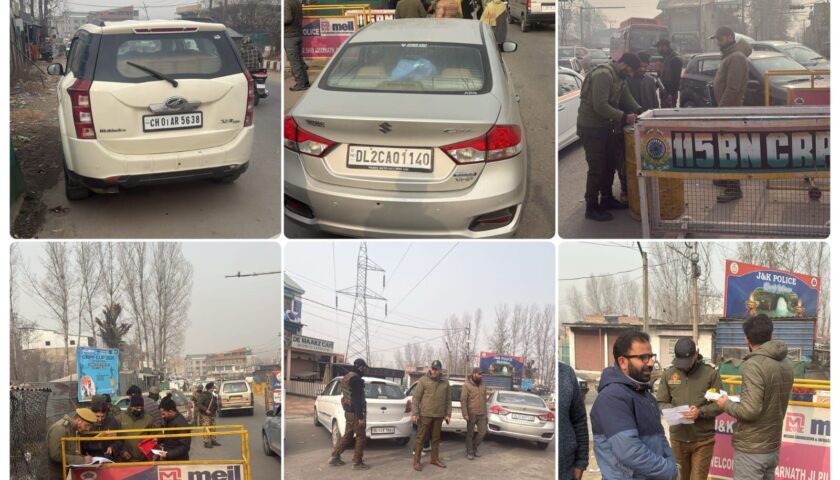Amid large-scale protests and clashes, the high-profile Srinagar parliamentary segment that went to polls on Sunday recorded the lowest-ever voter turnout, with the Election Commission of India authorities putting the overall polling percentage at 7.14, considered to be worst in five decades. Regarding the killings by forces, the CEO said “it was not a good day for all of us.”
Addressing a news conference here, J&K’s Chief Electoral Officer Shantamanu said nearly 7.14 percent polling was recorded in the segment for which the by-election was necessitated following the resignation of Tariq Hamid Karra. Karra had resigned on October 17 last year over “naked brutalities” inflicted on the people by the Government during the people’s uprising triggered by the killing of Hizbul Mujahideen commander Burhan Wani on July 8.
Giving break-up of votes polled, the CEO said 90050 votes were polled during the day-long exercise that was marked by killing of youth by forces.
The segment spread over Srinagar, Budgam and Ganderbal districts has 12.61 lakh voters.
He said 24574 votes were polled in eight assembly segments of Srinagar district with Hazratbal recording 3483 votes, Zadibal 3280, Eidgah 383, Khanyar 2587, Habba Kadal 2058, Amira Kadal 3331, Sonwar 4777 and Batamaloo 4675.
Similarly, he said, in five assembly segments of Budgam district, a total of 40288 votes were cast with Chadoora recording 602, Budgam 13276, Beerwah 13625, Khan Sahab 9492 and Chrar-e-Sharief 3293 votes.
In two assembly segments of Ganderbal district, a total of 24217 votes were polled that included 15199 in Kangan and 9018 in Ganderbal assembly segments, the CEO disclosed.
He said 3.84 percent polling was recorded in Srinagar, 8.82 percent in Budgam and 14.71 percent in Ganderbal districts.
“Kangan assembly segment in Ganderbal district recorded highest voter turnout of 15199, while lowest polling of 383 votes was recorded in Eidgah assembly segment,” he said.
Shantamanu also said 971 votes were also polled at the three migrant polling centres set- up at Jammu, Udhampur and New Delhi.
The Sunday’s voter turnout was the lowest-ever in the segment since elections were held for its first time in 1967.
The previous lowest voter turnout in the segment was 11.93% during the 1999 LS elections.
According to the Election Commission of India figures with Kashmir Post, the voter turnout on the seat was 37.25 percent in 1967, 58.88 % in 1971, 69.12 % in 1977, 73.51 % in 1984, 40.94 % in 1996, 30.6% in 1998, 11.93 % in 1999, 18.57 % in 2004, 25.55% in 2009 and 25.86 % in 2014.
During the 1996 Lok Sabha election, there were massive allegations that forces and ‘Ikhawanis’ (government gunmen) forced the people to vote and the voter turnout was inflated.
During 1980 and 1989 LS polls, Farooq Abdullah and Muhammad Shafi Bhat were respectively elected unopposed from the segment, while the 1991 LS polls could not be held in J&K due to outbreak of armed militancy.
Shantamanu, who was flanked by IGP Kashmir SJM Gilani, said the voter turnout today was much less than previous LS election when 26 percent polling percentage was recorded.
This implies that voter turnout this time was 19 percent less than previous LS elections.
The CEO said more than 200 incidents of violence were reported in the segment particularly in Central Kashmir’s Budgam district, on Sunday.
“There were more than 200 incidents of stone-pelting and petrol bomb attacks. The protesters also set ablaze a polling booth and also some SRTC and private vehicles,” he said.
He said they closed polling booths in some areas after protesters tried to set them ablaze.
“The EVMs were also damaged in the process but we got them back. After receiving presiding officers’ dairies, a team comprising election observer, returning officer and presiding officer would examine all such cases and decide on what needs to be done in the cases where polling was affected,” he asked.
Asked about the number of stations where polling was affected, the CEO said the number may be 50, 100 or 150.
“I cannot give you the exact number. But I can say the number could be around 50, 100 or 150,” he said.
The CEO described the election for Anantnag parliamentary segment as a major challenge.
“I think it is a bigger challenge and we will face it. We are making preparations in this regard,” he said.
The Anantnag parliamentary segment is going to polls on April 12.
According to observers, today’s voter turnout is a matter of concern for both the ruling PDP and the opposition National Conference.
“It is definitely a set-back for mainstream parties in Kashmir,” they said.
At present, the combined strength of legislators from Central Kashmir’s three districts is 17—14 MLAs and three MLCs.
Meanwhile, J&K Government described the today’s voter turnout as “depressing”.
“It would have been preferable to lose through a heavy turnout of votes rather than win through a boycotted election,” said senior PDP leader, Naeem Akther.
Asked whether 2016 uprising was responsible for the low voter turnout, Akther said the low percentage was due to many factors.
“It is depressing that we should stay away from democratic process, although it has been established that there is no other recipe of problems except democracy. We have to de-radicalize our approach to problems,” he said.
Akther, who is Minister for R&B, also blamed Farooq Abdullah for today’s violence.
“It is unfortunate that one of the candidates (Dr Farooq Abdullah) also tried to glorify stone pelting and protests against the country for whose Parliament he is contesting the elections. This dichotomy of approach has also contributed to very sad course of events today,” he said.
At the time of addressing the presser, Shantamanu said six civilians were killed and 17 injured in poll-related violence in Central Kashmir’s parliamentary segment.
He said six deaths were caused due to firing and other similar incidents.
“More than 100 police and paramilitary personnel were also injured in the violence,” he said
Sunday, January 11, 2026
Breaking News
- Winter Writes in Sub-Zero Ink as Chillai Kalan Enters Peak Phase in Kashmir
- Vaishno Devi Medical College Row: An Education Row That Became a Political Flashpoint
- Winter Exercise Guide: 9 Safe and Effective Workouts to Boost Bone Strength and Flexibility
- Winter Snowfall Crucial for Kashmir’s Agriculture and Water Security, Warn Experts
- Mirwaiz Umar Farooq Barred From Friday Prayers for Third Consecutive Week at Srinagar Jama Masjid



